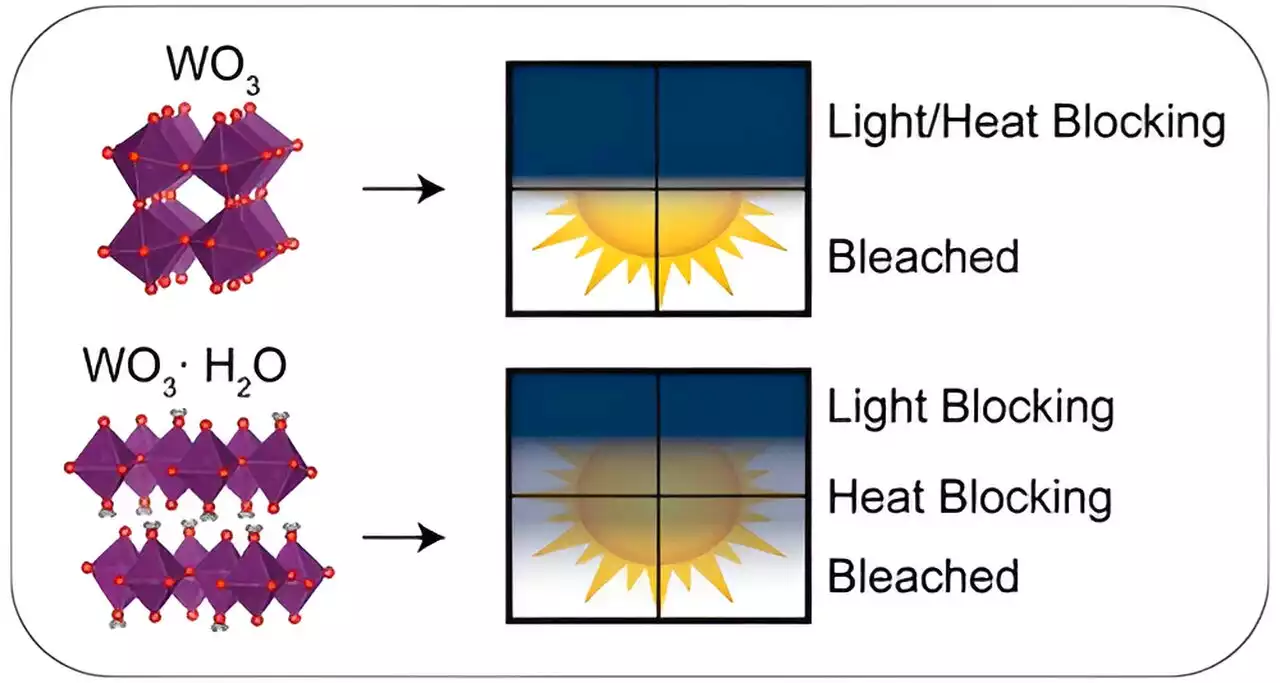Researchers have demonstrated a material for next generation dynamic windows, which would allow building occupants to switch their windows between three modes: transparent, or 'normal' windows; windows that block infrared light, helping to keep a building cool; and tinted windows that control glare while maintaining the view.
Researchers have now shown that you can effectively tune the wavelengths of light that are blocked when you inject lithium ions and electrons into a related material called tungsten oxide hydrate. When lithium ions and electrons are injected into the hydrate material, it first transitions into a"heat blocking" phase, allowing visible wavelengths of light to pass through, but blocking
. If more lithium ions and electrons are injected, the material then transitions into a dark phase, blocking both visible and infrared wavelengths of light.makes the structure less dense, so the structure is more resistant to deformation when lithium ions and electrons are injected into the material," says Jenelle Fortunato, first author of the paper and a postdoctoral fellow at NC State.
"Our hypothesis is that, because the tungsten oxide hydrate can accommodate more lithium ions than regular tungsten oxide before deforming, you get two modes. There's a 'cool' mode—when injection of lithium ions and electrons affects the, but structural change hasn't occurred yet—which absorbs infrared light. And then, after the structural change occurs, there's a 'dark' mode that blocks both visible and infrared light.
"The discovery of dual-band light control in a single material that's already well-known to the smart windows community may accelerate development of commercial products with enhanced features," says Delia Milliron, co-corresponding author of the paper and the Ernest Cockrell, Sr. Chair #1 in Engineering at the University of Texas at Austin.
"More broadly speaking, the unforeseen role of structural water in producing distinctive electrochemical properties may inspire the research community beyond smartJenelle Fortunato et al, Dual-Band Electrochromism in Hydrous Tungsten Oxide,
